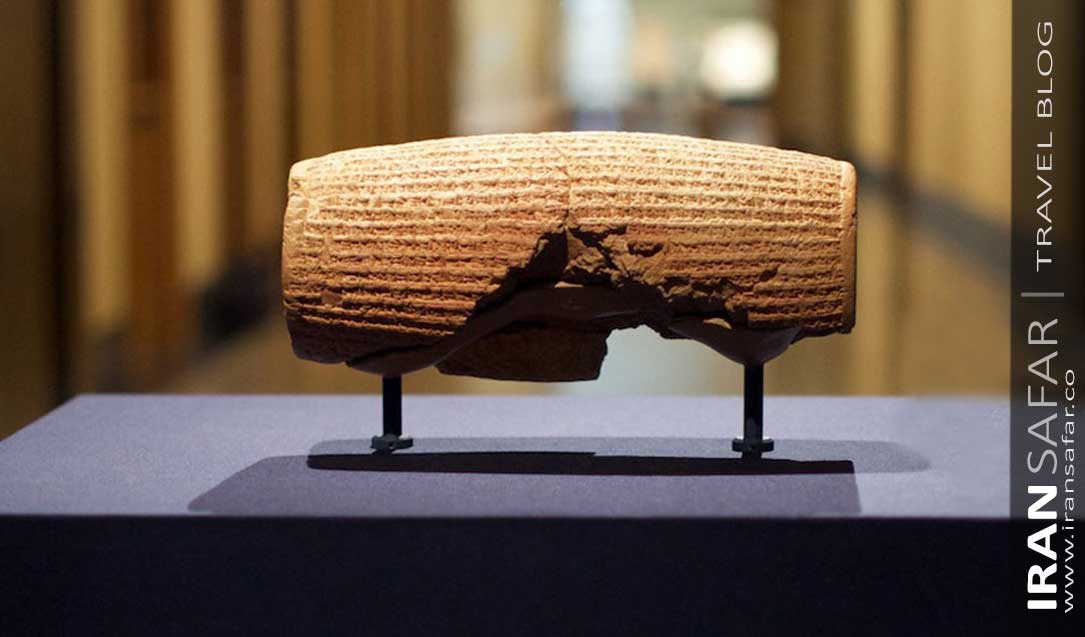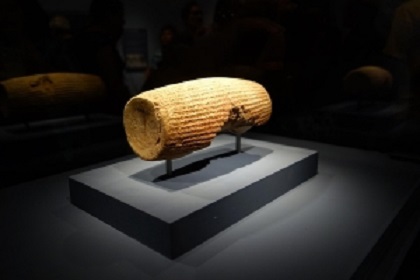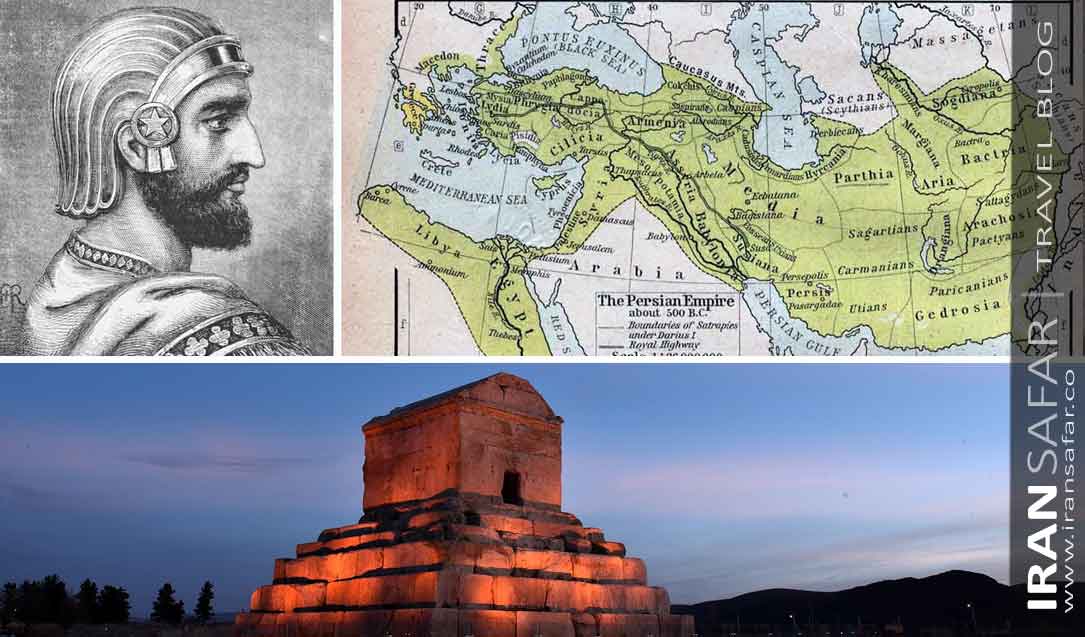Cyrus II, known as Cyrus the Great, was the founder and the first king of the Achaemenid empire who ruled a vast part of Asia between the years 559 and 529 BC.
October 29th is known as Day of Cyrus, which has been recently celebrated by Iranians and some other nations who respect Cyrus, such as Zoroastrians. This day is the anniversary of the completion of Babylonian Empire’s conquest by the Iranian army (October 29th of 539 BC) and the end of the tyranny of the ancient world.
Brief biography of Cyrus the Great
Cyrus II, known as Cyrus the Great, was the founder and first king of the Achaemenid Empire who ruled large parts of Asia between the years 559 and 529 BC. In his cylinder discovered in Babylon, Cyrus introduces himself as “the son of Cambyses, the great king of Anshan, the grandson of Cyrus I, the great king of Anshan, the grandson of Chish Pish , the great king of Anshan, of the family that has always been kings.”
According to Herodotus, Cyrus had a royal lineage. Greek historians, with exception of Ctesias, reported Mandana -the daughter of Astyages (median king)- as Cyrus’ mother. Some modern-day historians believe this narrative to be authentic, but others believe it to have had political origins, with the aim to reconcile the Medes with the Persian rule.
There are many different stories about Cyrus’ childhood, youth and the early years of his life; although each narrates his birth story in a specific way, the descriptions are more like a myth. Herodotus quotes four stories about Cyrus’ seizure of power but only one of them is considered to be valid. According to Xenophon, a series of different stories was told about Cyrus from the fifth to fourth centuries BC.
Cyrus the Great Accomplishments
Cyrus, first rebelled against King of Media and then stormed the capital of the Median state in Ecbatana and conquered this prosperous city with the help of the Mede Corps. Then defeated Croesus King of Lydia and sailed to Sardis, and after two weeks, the city of Sardis was occupied by Iranian forces. Cyrus entrusted the command of the conquest of the other cities of Asia Minor to his commanders and returned to Hegmataneh and then headed towards Parthia, Zarangiana, Herat, Khwarazm, Bakteria, Sogdia, and Gandehar. The details of these battles are not recorded in history and little is known about the quality of these wars. In the spring of 539 BC, Cyrus started the Babylonian conquest and entered the city of Babylon without any bloodshed. According to historical documents and researchers, the conquest of Babylon happened without any battle and was carried out by one of Cyrus’ commanders in chief named Geubruh on New Year’s Eve. Seventeen days after the fall of Babylon, Cyrus himself entered the capital on October 29th, 539 BC. The Babylonian occupation was a turning point in balancing the super powers that ruled Western Asia and also paved the way for the return of exiled Jews to their homeland in Israel. Cyrus also ordered the rebuilding of the Temple of Jerusalem and handed over to the Jews the vessels of gold and silver that Nebuchadnezzar II had looted from Jerusalem.
Cyrus the Great in the Bible
Cyrus the Great is considered the patron and savior of the Jews in the Hebrew Bible. He is mentioned 23 times by name and referred to several times. According to the old testaments, Cyrus the Great, the Persian emperor, was the king under whom the Babylonian captivity ended. In the first year of his reign, he ordered to rebuild an old temple in Jerusalem so that the Jews, as they wished, could return to their homeland. In addition, he showed interest in the project by sending back with them sacred vessels taken from the First Temple and a considerable amount of gold to buy construction materials.
Cyrus Cylinder
On the same day, Cyrus the Great, after opening the city gate, entered the great, glorious, and ancient city of Babylon. The people of Babylon thought that they would now be faced with plunder and slaughter and extortion of their lives and property, but Cyrus the Great and his troops did not do so. Instead, a royal decree was created that eliminated racial and ethnic discrimination and recognized freedom of religions and also the choice of residence. This cylindrical cuneiform inscription has been regarded by the United Nations (in 1971), as the first human right charter ever established in the world by Cyrus.

The Cyrus Cylinder was inscribed after defeating Nabonidus and conquering Babylon – located in ancient Mesopotamia. It is a valuable historical document. In the year 1971, the United Nations published the Cyrus Cylinder text in all the official languages of the United Nations members, and put its replica in the UN headquarters in New York City. The original cylinder is kept in British Museum
The Cyrus Cylinder Text
The text can be divided into two parts:
The first part (Lines one to 18) is about summary of Cyrus’ deeds. The text (in the third person) is mostly explaining king Nabonidus, the last Babylonian ruler, who has typically been characterized as attempting religious reforms in Babylonia. He is said to have forbidden the cult of Marduk, wishing to raise the moon god Sîn to the status of supreme deity and demoting the Babylonian national deity Marduk. Consequently, the subjects made complaints to the gods – as Cyrus says – and Marduk found Cyrus in order to make him the world’s ruler. All the inhabitants of his new empire were delighted to see him as their new king.
In the second part, Cyrus speaks in the first person. He begins with his titles and his achievements. He continues saying that he took care of Marduk’s cult at Babylon, and that he had “allowed people to find rest from their exhaustion, their servitude”. He also tells that lots of kings bring him levies, and that he restored the cults in all the former kingdoms which are now part of his, and that he released the former deported persons.
How did Cyrus the Great die?
Herodotus reports that Cyrus was killed in the war with the Masagets, but this view is rejected by most modern historians, who believe that Herodotus’ story is fabricated. The only authentic ancient source that indirectly refers to the death of Cyrus is the two clay tablets found in Babylon, the first of which dates back to August 12th, 530 BC, which dates to “the ninth year of Cyrus the King of Nations”. The second document, dated August 31st , 530 BC, is titled “The Year of the Beginning of the Cambyses Rule, King of Nations”. These two documents, which seem to be of little importance, actually show that Cyrus died (or killed) between August 12th and August 31st, or at least, the news of his death and that of Cambyses settlement arrived in Babylon on this date.
Commemoration of Cyrus
Every year on October 29th, Iranian people try to symbolically celebrate the day of Cyrus at the place of Cyrus’ Tomb which is located in Pasargadae in Fars province.
Also Read – Pasargadae Ultimate Guide
Cyrus the Great Timeline
558 BC: The beginning of Cyrus’ kingdom in Anshan (Fars province) and Khuzestan. Transfer of the Achaemenid capital to Susa.
550 BC: The defeat of Ishtuvegu (Astyages) Median king by Cyrus and his conquest of Ekbatana (Hegmataneh) Median and Persian alliance.
549-548: BC: Conquest of the lands of Parthia, Georgia and possibly Armenia by Cyrus.
546 BC: Cyrus’ conquest of the capital of Lady by Cyrus and the defeat of King Karzus of Lady.
539 BC: Cyrus conquers Babylon, the richest city in West Asia. The fall that occurred with the low resistance of the Babylonian Corps on the Tigris coast.
539 BC: Cyrus allowed the displaced Jews to return to Jerusalem and build synagogues for themselves there.
529 BC: Cyrus invades the Scythian tribes in northeast Iran and is killed in a battle with the Masagets. He was buried in Pasargadae. After him, Cambyses II, son of Cyrus, succeeded to the throne.




Comment (0)